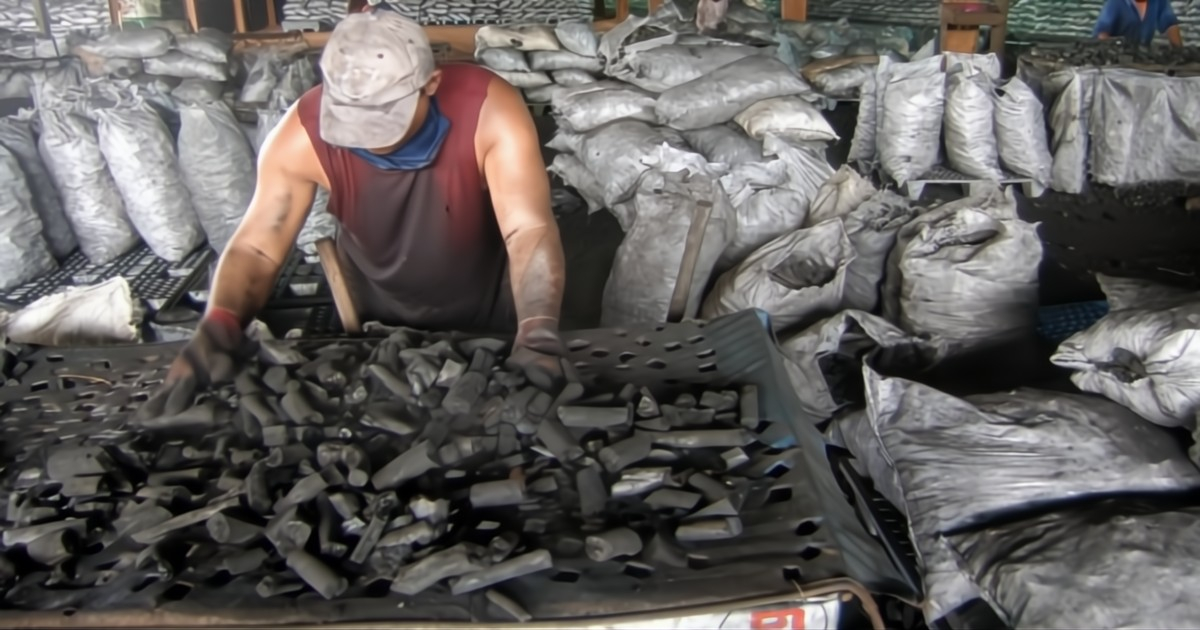The price of charcoal in Cuba has soared in recent months, turning it into a luxury item for many families who rely on it for cooking due to frequent power outages. A report from 14yMedio highlighted the escalating prices in provinces such as Sancti Spíritus, where a sack costs 800 pesos; in Cienfuegos, it can reach up to 1,000 CUP, and in Holguín, it goes up to 1,400. This "black gold" is becoming increasingly difficult to obtain in a nation where the energy crisis has hit unprecedented levels due to a generation deficit.
People are struggling to find fuel for cooking, not only because of 20-hour blackouts but also due to the lack of a stable supply of liquefied gas.
Havana's Struggles: No Electricity, Gas, or Charcoal
Journalist Patrick Oppmann shared on social media the dire situation of power outages in Havana and how this affects the rising price of charcoal in the capital. "The sun sets over a darkened Havana... Once again, electricity has been sporadic throughout the day. Other parts of Cuba face even worse conditions," he remarked. He also recounted a conversation with a rural woman who feels fortunate to live near a forest, allowing her to use wood for cooking, as charcoal has become prohibitively expensive.
Charcoal Production Crisis in Las Tunas
In the eastern province of Las Tunas, the situation worsens due to the dismantling of Las Carboneras, a small community known for charcoal production. Despite increasing demand, the industry in Las Tunas is struggling. The municipal Agroforestal company recently lost its only two permanent producers, relying now on temporary workers who "come, make a kiln, and leave."
The state-set payment for production fails to motivate. While the price per kilogram rose from four to 15 pesos, the government still buys a sack for just 500 pesos, a third of the price on the informal market. Producers must also provide the empty sack, further discouraging the few remaining charcoal makers.
Las Carboneras was once a village with ten homes. Residents moved to Manatí after the school and store closures left them without access to food and education. The director of Agroforestal acknowledged the dire poverty in these areas, stating, "Charcoal workers need clothes, shoes, tools... They are not just any workers."
Understanding Cuba's Charcoal Crisis
Why is charcoal becoming so expensive in Cuba?
Charcoal prices are rising due to increased demand from families needing it for cooking during frequent power outages, coupled with a decrease in production and supply issues.
What challenges are charcoal producers facing in Las Tunas?
Producers in Las Tunas face challenges such as lack of incentives, inadequate state payments, and the requirement to supply their own empty sacks, leading to a decline in production.
How are Havana residents coping with power outages?
Residents in Havana are struggling with inconsistent electricity and are turning to alternative methods like using wood for cooking, as charcoal prices become unaffordable.
